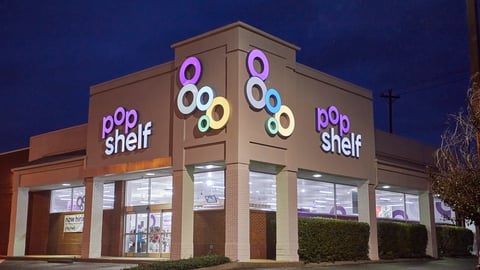Study: Retailers are missing in-store sales opportunities
Retailers have yet to learn that their lack of in-store digital engagement is sending shoppers elsewhere to make a purchase.
Almost three-quarters (74%) of shoppers feel positive or very positive toward traditional physical retailers. Yet, they feel brick-and-mortar retailers are not taking full advantage of the shopping apps that enable real-time digital engagement and information that prompt customers to buy in the store, according to a study from Scandit. The study is based on responses from more than 1,500 respondents in the United States, U.K. and Germany.
Retailers are so ineffective in meeting their customers' expectations that 58% of respondents reported that after browsing items in-store, they often or sometimes purchase them later with a mobile device. In addition, 41% of consumers said when an item is not available in the store they buy it from a competing online or brick-and-mortar retailer.
When it comes to shoppers’ most coveted features while using a mobile app in store, 30% reported they would use it for self-checkout, 26% would use an app to search for sale items, 25% would use it to access customer reviews, and 24% said they would access in-store coupons.
In the U.K., 23% of respondents said that they would use a digital shopping assistant app on their smartphone or tablet if it was available. Another 41% confirmed that a mobile device enhances their shopping experience.
"Web retailers' increasing entry into the brick-and-mortar retail space inspired us to share how to leverage current technology to create the store of the future today," said Scandit CEO Samuel Mueller. "For example, a customer seeking a specific product, such as a food item with vegan ingredients, can scan an entire shelf of goods and then use augmented reality feedback to have all vegan products instantly highlighted in their smartphone screen display."
The good news is that brick-and-mortar retailers are well-positioned to take back sales revenue from big online enterprises.
"The retail ecosystem is already built around the barcode as the primary source of product information,” Mueller said. “By using ubiquitously available smart devices and affordable software, retailers can turn barcodes into a seamless customer experience foundation with minimal overhead.”
Almost three-quarters (74%) of shoppers feel positive or very positive toward traditional physical retailers. Yet, they feel brick-and-mortar retailers are not taking full advantage of the shopping apps that enable real-time digital engagement and information that prompt customers to buy in the store, according to a study from Scandit. The study is based on responses from more than 1,500 respondents in the United States, U.K. and Germany.
Retailers are so ineffective in meeting their customers' expectations that 58% of respondents reported that after browsing items in-store, they often or sometimes purchase them later with a mobile device. In addition, 41% of consumers said when an item is not available in the store they buy it from a competing online or brick-and-mortar retailer.
When it comes to shoppers’ most coveted features while using a mobile app in store, 30% reported they would use it for self-checkout, 26% would use an app to search for sale items, 25% would use it to access customer reviews, and 24% said they would access in-store coupons.
In the U.K., 23% of respondents said that they would use a digital shopping assistant app on their smartphone or tablet if it was available. Another 41% confirmed that a mobile device enhances their shopping experience.
"Web retailers' increasing entry into the brick-and-mortar retail space inspired us to share how to leverage current technology to create the store of the future today," said Scandit CEO Samuel Mueller. "For example, a customer seeking a specific product, such as a food item with vegan ingredients, can scan an entire shelf of goods and then use augmented reality feedback to have all vegan products instantly highlighted in their smartphone screen display."
The good news is that brick-and-mortar retailers are well-positioned to take back sales revenue from big online enterprises.
"The retail ecosystem is already built around the barcode as the primary source of product information,” Mueller said. “By using ubiquitously available smart devices and affordable software, retailers can turn barcodes into a seamless customer experience foundation with minimal overhead.”






